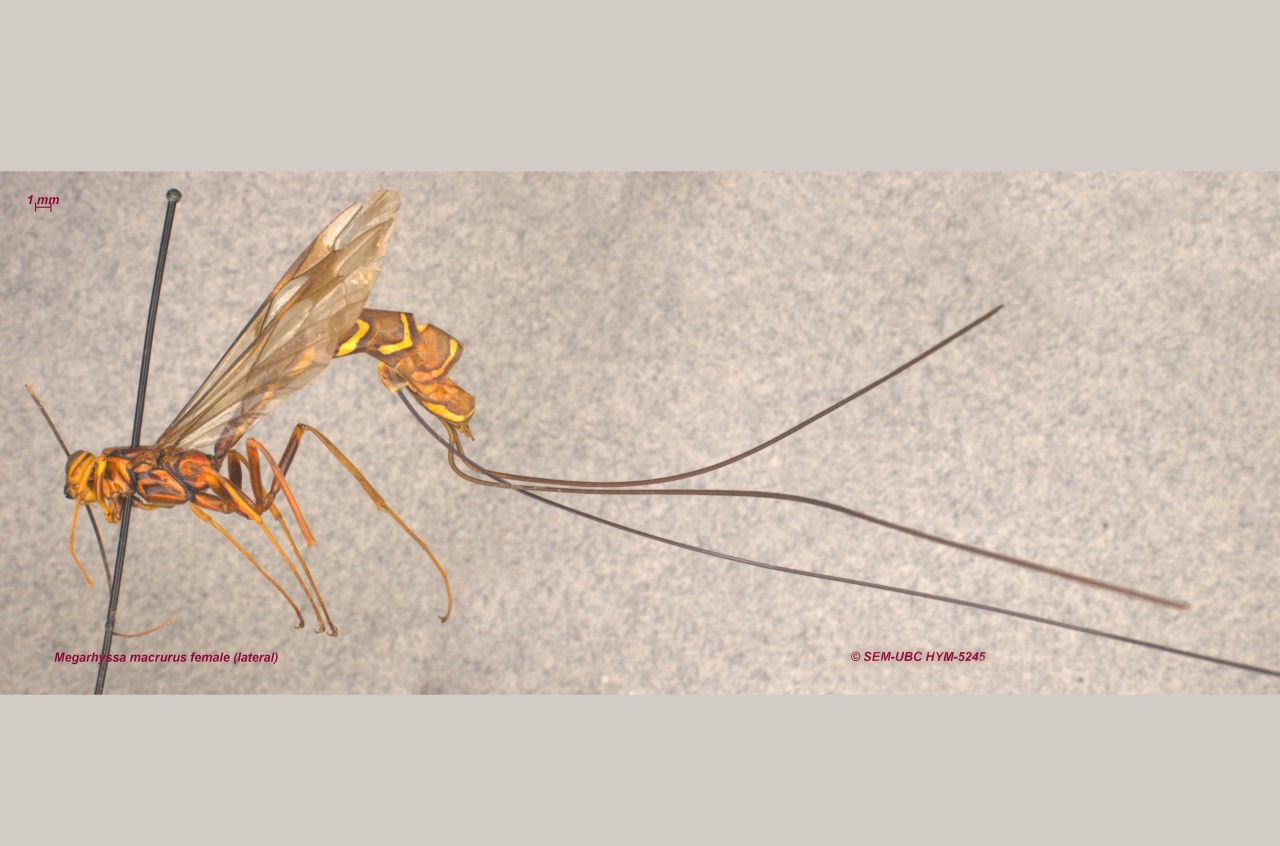“Species of Megarhyssa belong to the parasitic wasp family Ichneumonidae in the order Hymenoptera. Females use their very long ‘stinger’ or ovipositor, to lay eggs in the galleries of wood wasp larvae (Hymenoptera of the family Siricidae or horntails) that live deep in the trunks of trees. Once the eggs hatch, the Megarhyssa larva kills and consumes the wood wasp larva, pupates within the tree, and then emerges as an adult wasp. Because wood wasps damage trees, Megarhyssa species are considered beneficial. The length and flexibility of their ovipositor means that they cannot sting humans, although they could bite, if threatened. If one includes the ovipositor, Megarhyssa species are the longest wasp species in the world (up to 16 cm in length - the body alone can be up to 4 cm in length)! There is one species of Megarhyssa in British Columbia: M. nortoni (Cresson) that can be found throughout the summer, hunting around coniferous trees for their hosts. Every summer, people send specimens or photos of these very large wasps to me for identification and are usually amazed that insects this large are found in Canada.”
Dr. Andrew Bennett, Research Taxonomist (Ichneumonidae) at the Canadian National Collection of Insects.
